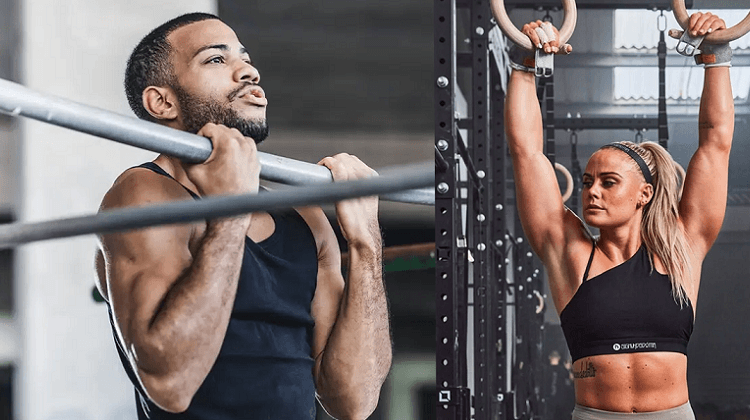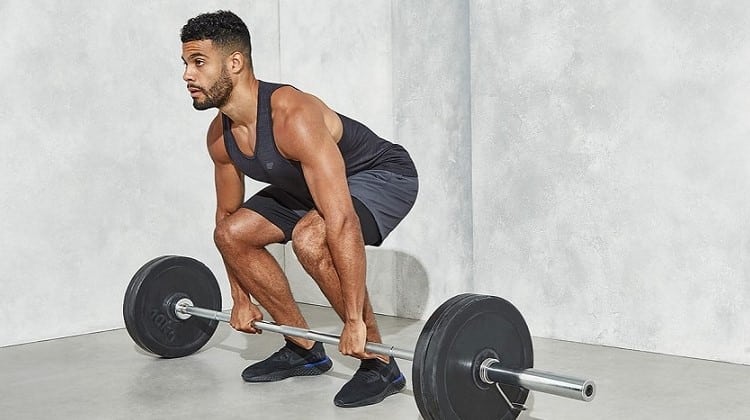Are you hoping to achieve a more muscular and toned appearance? To achieve your fitness goals of increased strength and leaner muscular mass, you need a reliable resistance training program.
How to Achieve Muscle Growth In Men
Most bodybuilders would tell you that the first step to achieving muscle growth in men is to spend a bit of money investing in the right type of training equipment or subscribe as a member of your local gym.
If you are a novice to any weight training program, then all you need to start with are resistance bands, a stability ball, and a set of dumbbells. But having the right equipment for your training regimen is not sufficient, especially as a beginner.
You also need to get some expert advice on how to organize your training routine as well as ensure that you practice and perfect your form before trying out heavy weights. This is important for safety reasons, as you do not want to get injured due to poor form during weight training.
The objective of any strength training program is to train your targeted skeletal muscle groups with the use of either your own body weight or strength training equipment like kettlebells and dumbbells.
Strength training is essential for increased muscle growth, improved bone density, and a toned, sculpted appearance, while cardiovascular exercise is necessary for a healthy heart, increased stamina, and calorie expenditure.
As you approach your 30s, this will take on greater significance. At this age and beyond, everyone loses around half a pound of muscle mass per annum unless they take active measures to prevent it.
Men should also aim to increase their testosterone levels, as this hormone plays a crucial role in muscle development and repair. The easiest method to do this is to engage in regular exercise and maintain a nutritious balanced diet, both of which increase hormone levels and promote muscle gain.
We have compiled a list of the top resistance and strength training exercises that work all the major muscle groups of the body, with or without the added benefits of weights.
You can improve your strength and achieve that toned body you have always wanted by following the workout routines highlighted in this post.
Many of these training regimens have variants that you can try learning once you have mastered the basics.

8 Muscle Build Workouts to Start Today
You can start the eight muscle build workouts below, but follow the instructions properly to avoid incurring minor to major injuries. Better yet, deploy the services of an experienced trainer to guide you through these exercises.
Two-Handed Kettlebell Swing
By training both your upper- and lower-body muscles, the kettlebell swing is an excellent total-body exercise to try out today. Using kettlebells is also a great way to increase your testosterone levels and put on muscle fast. If you can afford to buy this equipment, it is well worth your investment.
The adductor magnus, a huge triangle muscle on the side of your thigh, is worked in addition to your hamstrings, the flexor muscles of your forearm, triceps, and gluteus maximus, or buttocks.
Strength, flexibility, and a full range of motion in your hips are all added bonuses when you try out the two-handed kettle swing.
How to Perform the Two-Handed Kettlebell Swing Properly
Position the kettlebell in front of you on the floor and in between your feet, then stand with your feet about shoulder-width apart.
If you want to pick up a kettlebell, you need to get down on all fours and bend at the waist until your torso is parallel to the ground.
Have a firm hold on the kettlebell with both hands. Grab it with both hands and swing it up and back between your knees.
Bringing the kettlebell down between your knees is a great way to practice active flexing, as your hips will act as a hinge while you keep your knees from bending too far.
Maintain a neutral spine by keeping your back and neck in a straight line. Bring the kettlebell forward to around chest level by flexing at the hips.
Reverse the motion and send it tumbling back down your thighs. Controlling the motion requires maintaining strong core engagement.
Keep going until you have used up all your momentum. Bring the kettlebell back to the ground in front of your feet and gently lay it down to complete the exercise.
Bodyweight Chin-Ups
Chin-ups are a great bodyweight exercise for building a strong upper back, biceps, and lats. To perform a bodyweight chin-up, or a simple chin-up, you just need access to a chin-up bar or any bar strong enough to hold your weight.
Your upper back, biceps, and lats (the large flat muscle connecting your spine, side of your body, and upper arm) will all benefit from doing these exercises.
Keep your arms up and out to the sides as you stand under the bar. For a tight grasp, place your thumb around the handle and jump up to grab it.
You may brace your core and increase your body’s stability by crossing your legs. Your head should be in line with your spine, your wrists should be straight, and your forearms should be at rest. Lower and back your shoulders, then pull yourself up slowly while bending your elbows. As you pull, your elbows should be pointing toward the floor.
Keep your torso straight and avoid swaying as you lift yourself up. You should keep going until your chin is at bar or hand level. Hold, relax, and straighten your elbows back to their original posture.
Make sure to maintain a contracted core and a backward tilt of your shoulder blades throughout this workout.

Barbell Bench Press
Workouts that include barbell bench presses are great for building up chest strength.
Dumbbells are a good alternative to a barbell for your bench press if you are unsure of your ability to handle a barbell, you don’t have access to the equipment, or are just seeking to switch things up occasionally.
The barbell bench press or chest press is an excellent exercise to help you achieve that classic upper body bodybuilder look.
Lay down on a bench while holding the barbell at slightly more than shoulder distance.
Drive your flat (or almost so) feet into the floor. While pressing your hips into the bench, you may easily raise the bar off the rack.
Slowly lower the bar to your chest while bending your elbows slightly out to the sides. Lower it farther until your forearms are resting on the floor beside the bench. Be sure to tread firmly on the floor with both feet which gives you the leverage to press the bar back up to its starting position.
Standing Lunge With Dumbbells
Your leg muscles are bolstered by the standing lunge exercise. Standing lunges are also a great way to tone your glutes and thighs. If you stick with this workout, you will notice your lower body fat melt away and be replaced by toned muscles.
Take a dumbbell in each hand and hold them at your sides with your palms facing inward.
Take a stride forward with your right foot while keeping your back straight.
When your right foot lands on the floor, you should begin to bend your left knee toward the floor.
To stand up, plant your right foot firmly on the ground and then slowly bring your left foot back to its previous position. Turn the page and do it again.
Squats
Your leg and butt strength can be improved by performing squats.
The squat is yet another excellent exercise for developing lower-body muscle groups.
The squat is also a great exercise for toning your legs and bum as well as your hips.
If you want to get the most out of your squat, try going lower. But don’t forget that doing so will also require you to use your abs and back muscles.
Here is the correct form to take when performing squats:
Your feet should be slightly wider than hip-distance apart, your toes should be turned outwards, and your arms should be at your sides with your palms facing in.
Rectify your posture by dropping your shoulders. To prevent back pain, you should contract your abdominal muscles and hold that position.
Put some space between your shoulder blades and tuck your chin in. Stand more on your heels.
Softly hinge at the hips and knees as you inhale and lower your hips. Your knees may start to move forward, but you should use your core muscles to prevent or minimize this movement. No arching of your back allowed during this workout.
Reduce your body’s elevation until your thighs are almost or completely parallel to the floor. Do not allow your feet to move.
Keep your knees directly above the second toes of both feet at all times.
Lift yourself off the ground by extending your knees and hips, then driving down with your heels. If you want to get back up straight, you need to keep stretching.

Push-Ups
Push-ups are great for building the muscles of your upper body. Push-ups are equally a great way to build upper-body strength, especially in the chest (pectoral) muscles, arms, and shoulders.
In the long run, you can even try doing push-ups with your hands off the ground, in a position known as an elevated or suspended push-up (using suspension straps).
Starting with your feet together and your toes pointed toward your shins (flexed), get down on all fours with your hands shoulder-width apart, palms flat on the mat, and your thumbs pointing up. It’s imperative that you keep your legs and hips straight at all times.
For a rigid midsection, it’s important to use your abs. Maintain a straight neck and back posture. As you lower your body to the floor, keep your head in line with your spine and your abdominal muscles tight.
Do not let your hips rise or your lower back round. However, it is generally acceptable to show some elbow room. Keep squatting until your chin or chest touches the floor.
Now, using the strength in your torso and the proper positioning of your head and spine, press your body upward via your arms. A reminder to keep your hips level and your lower back from rounding. Finally, to fully stretch your arms at the elbows, continue to press upward.
Barbell Bent-Over Row
Your back muscles are worked hard during a barbell bent-over row. Your lower and upper back muscles are also both highly engaged during the standing bent-over row.
However, this exercise can be swapped for an inverted row if you experience any back pain during the workout, as the latter places less stress on your lumbar spine (the part of your spine that curves between your pelvis and your hips).
Hold the weighted barbell in front of you with your hands just outside of shoulder width apart from each other. Raise the barbell from the ground by flexing your trunk over your hips.
The bar should be brought to the lower region of your chest while maintaining a neutral spine, a knee bend, and elbow flexion, respectively. Pause then slowly bring it down to safety levels. Row back and forth, pausing when your chest is about halfway between your chin and your elbows.
Deadlifts
In the realm of weightlifting and bodybuilding, deadlifts are a standard exercise. Deadlifts are a great way to strengthen your legs, back, hips, and core all at once.
You can do this workout by setting down a weighted barbell on the ground and stepping behind it, with your feet either directly under the bar or just behind it.
Squat down and grab the barbell with your hands, keeping your fingers about shoulder-width apart. Raise the bar above your head by extending your legs and hips until you are standing tall while clutching the barbell.
When your arms are completely extended, they will meet you at hip level. Keep your head up and your chest out, and don’t slouch or curve your shoulders.
Reduce the weight by lowering the bar back to the squatting position then repeat the exercise.
There’s also the Romanian deadlift, which focuses more on toning your hamstrings. In this variation, you raise the barbell while maintaining a straight leg position. Then, with your legs straight, bend at the hips and lower them to the tops of your feet.

Things To Keep In Mind While Engaging In Muscle Build Workouts
To maximize your workout, increase your testosterone, and start gaining muscle, remember these guidelines as you embark on your strength training program:
Strength training alone, without any exercise, can increase testosterone in as little as 45 minutes. At least twice a week, focus on working each muscle group individually.
Include brief rest intervals of one to two minutes between sets of exercises. Keep the “how” of your workout in mind more than the “how much” or “how many” as you get started.
Before worrying about the amount of weight you are lifting or the number of repetitions or sets you are performing, you need to perfect your technique. If you don’t master the proper technique, you could end up hurting yourself in addition to reducing the effectiveness of the muscle-building exercise. Make gradual improvements to your routine. It’s recommended that you perform 8–12 reps per set to begin with. However, two or three repetitions of each exercise should be doable for most people.
As you get older, you should stop exercising “to complete failure,” or until your muscles are completely fatigued. Because of this, you can find yourself unable to breathe normally and experiencing pain in your joints.
Instead, you should pick a pace, number of reps, and weight that you can easily complete. If your workout has you feeling lightheaded or queasy, you may be pushing yourself too hard.
To lessen the workout’s intensity, you can do fewer repetitions or lift less weight. At some point in your fitness journey, you may find that your once-effective training routine is no longer producing the desired results. You can now try out new workouts, switch up your rep count, or increase the resistance you’re utilizing.
Never skip the warm-up, and never skip the cool-down and stretching at the end of your workout, no matter how intense or short your workout is. Always factor in some time for rest and recuperation. And it includes the time you need to recuperate after your workout and always get a good night’s sleep.
Keep in mind that you should consult your doctor before beginning an exercise routine, especially if you have any preexisting medical conditions or injuries, such as a damaged back, an injured knee, or diabetes. After you have determined that these workouts won’t put your health at risk, you can then begin with your scheduled strength training program set up for you by a competent trainer. You can get free coaching tips and a weight training program that suits you right here.


